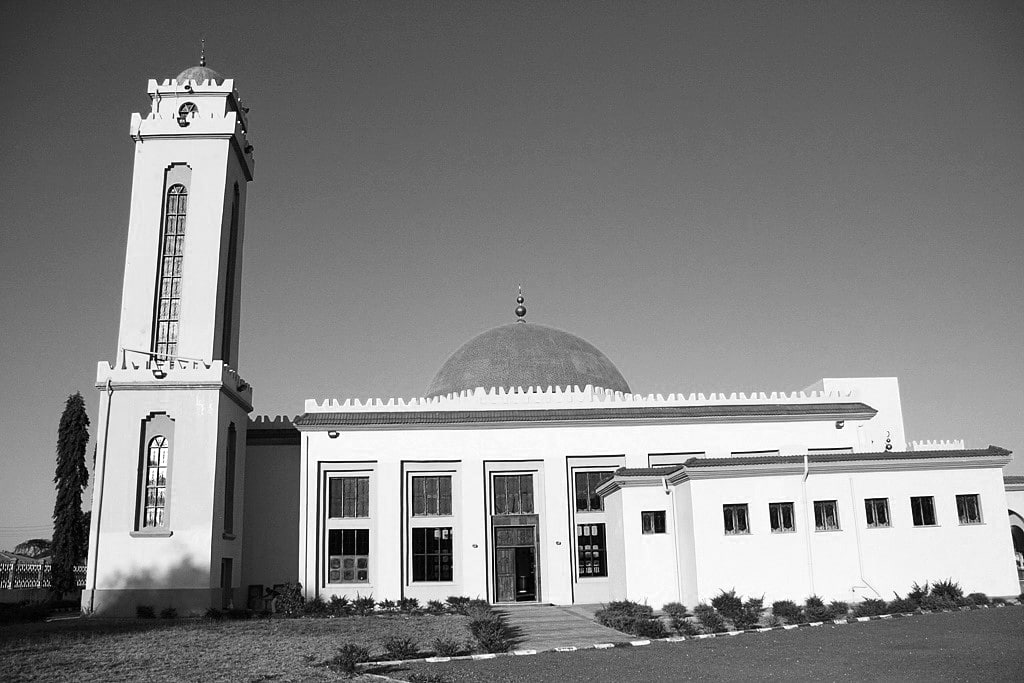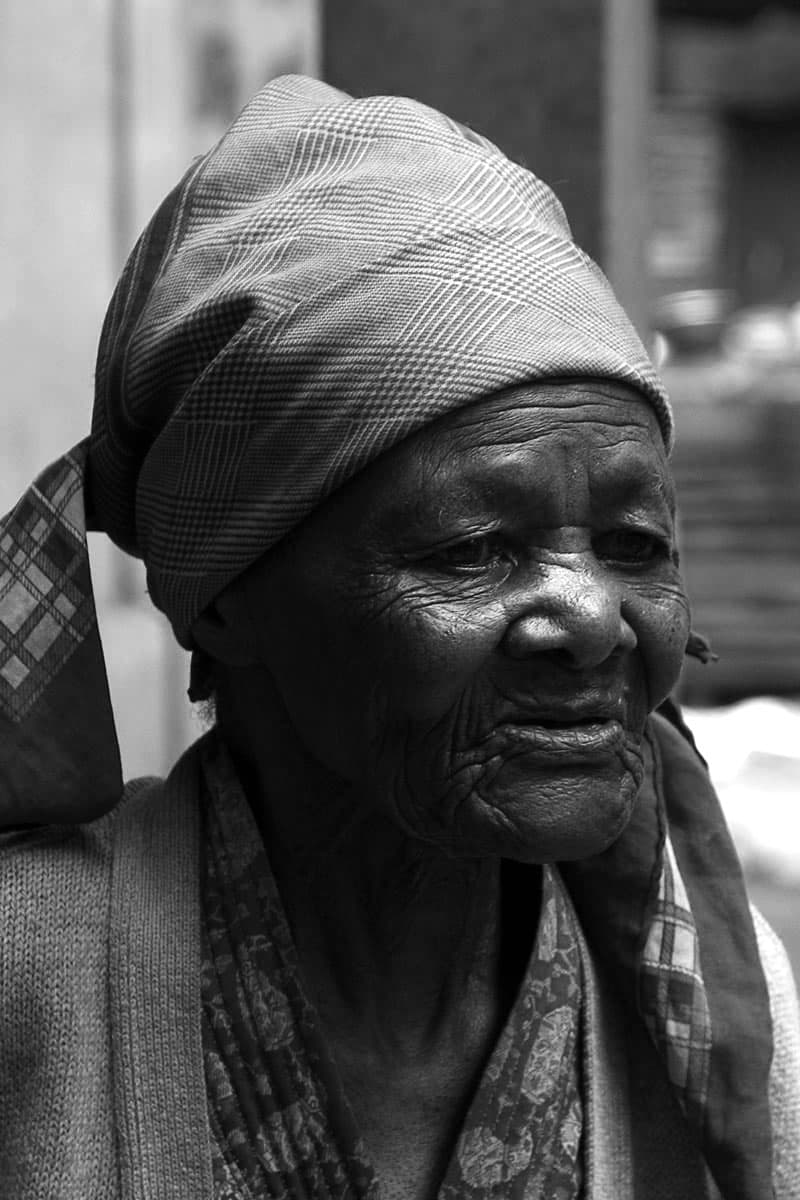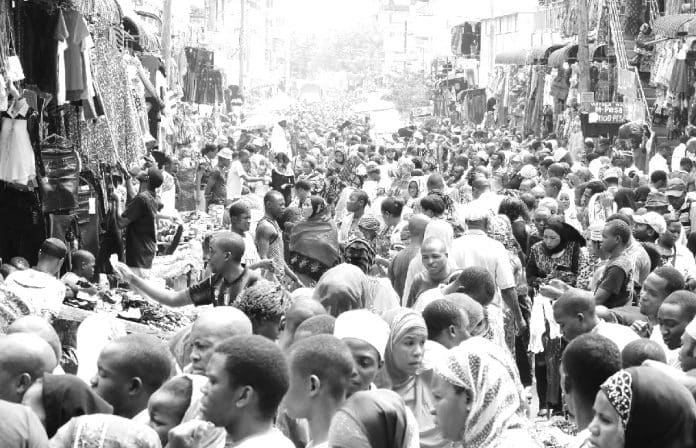Tanzania Demography Data About its Population

This article looks into Tanzania demography, including number of people, ethnicity, level of education, health, economic status, religious affiliation, and other matters affecting the people.
The distribution of people in Tanzania is completely unequal. Most people live on the northern border or the east coast, with much of the country left with few people. The ratio varies from 12 square kilometers (31 / sq mi) in Katavi Region to 3,133 per square kilometer (8,110 / sq mi) in Dar es Salaam. About 70% of the population lives in rural areas, although this percentage has been declining since 1967. Although Dar es Salaam is the largest city but legally Dodoma region, located in central Tanzania, is the capital, but the move to relocate government buildings to Dodoma has slowed down significantly.
This population is made up of about 125 ethnic groups, including Sukuma, Nyamwezi, Chagga, and Haya, who have more than 1 million people per tribe (Tip: explore our article “Origins of Tanzania Tribes” to learn more about the history of tribes in Tanzania).
Tanzania has more than 100 different spoken languages, making it the most multilingual country in East Africa. The spoken languages of Tanzania come from all four African language families: Bantu, Cushite, Nilotic, and Khoisan. Swahili and English are the official languages of Tanzania. Kiswahili is derived from the Bantu branch of the Niger-Congo family. The Sandawe people speak a language that may be related to the Khoe languages of Botswana and Namibia, while the language of the Hadza tribe, although having similar consonants, is an unrelated language. The Iraqw language is Cush. Other languages are Hindi and Portuguese (spoken by the Goa and Mozambicans).
Although the majority of Zanzibar‘s population came from the mainland, there is a group known as Shirazis which has a direct link to the origin of Zanzibar islands all the way back to early settlers (from Persia). Non-Africans living on the mainland and Zanzibar make up 1% of the total population. The Asian community, including Hindus, Sikhs, Shi’a and Sunni Muslims, Parsis, and Goa, has declined by 50 percent in the 2000s and early 2010 to 50,000 in mainland Tanzania and 4,000 in Zanzibar. It is estimated that 70,000 Arabs and 20,000 Europeans (90% of whom are from the United Kingdom) live in Tanzania. More than 100,000 people living in Tanzania are of Asian or European descent.
Based on the figures for 1999–2003, more than 74,000 people born in Tanzania were living in the countries that are part of the Organization for Economic Co-operation and Development, of which 32,630 were living in the United Kingdom; 19,960 in Canada; 12,225 in the United States; 1,714 in Australia; 1,180 in the Netherlands; and 1,012 in Sweden.
Population
According to the 2012 census, Tanzania had a total population of 44,928,923 as opposed to 12,313,469 residents in 1967, this is due to a growth rate of 2.9 percent annually. 44.1 percent of the population represents a group under the age of 15, with 35.5 percent representing a group aged 15-35, 52.2 percent being a group aged 15-64, and 3.8 percent being an older group of 64 years.
According to the 2012 World Population Adjustment Amendment, children under the age of 15 accounted for 44.8 percent of the total population, with 52.0 percent being 15–64 years old and 3.1 percent aged 65 or more.
| Total of People | Population with Age Range 0–14 (%) | Population with Age Range 15–64 (%) | Population with Age Range 65+ (%) | |
| 1950 | 7,650,000 | 46.0 | 51.8 | 2.2 |
| 1955 | 8,741,000 | 45.7 | 52.0 | 2.3 |
| 1960 | 10,074,000 | 45.8 | 51.8 | 2.4 |
| 1965 | 11,683,000 | 45.8 | 51.7 | 2.4 |
| 1970 | 13,605,000 | 46.2 | 51.3 | 2.5 |
| 1975 | 15,978,000 | 46.4 | 51.1 | 2.6 |
| 1980 | 18,687,000 | 46.5 | 50.8 | 2.6 |
| 1985 | 21,850,000 | 46.4 | 51.0 | 2.7 |
| 1990 | 25,485,000 | 46.0 | 51.3 | 2.7 |
| 1995 | 29,944,000 | 45.3 | 51.9 | 2.8 |
| 2000 | 34,021,000 | 44.8 | 52.3 | 2.9 |
| 2005 | 38,824,000 | 44.6 | 52.4 | 3.0 |
| 2010 | 44,793,000 | 44.8 | 52.0 | 3.1 |
Population Structure
Population structure (01.07.2013) (estimates):
| Age Group | Males | Females | Total | % |
| Total | 23 267 957 | 23 864 623 | 47 132 580 | 100 |
| 0-4 | 4 191 004 | 4 121 103 | 8 312 107 | 17,64 |
| 5-9 | 3 608 891 | 3 551 955 | 7 160 846 | 15,19 |
| 10-14 | 2 735 494 | 2 728 687 | 5 464 181 | 11,59 |
| 15-19 | 2 494 983 | 2 490 960 | 4 985 943 | 10,58 |
| 20-24 | 2 179 173 | 2 160 970 | 4 340 143 | 9,21 |
| 25-29 | 1 730 600 | 1 754 007 | 3 484 607 | 7,39 |
| 30-34 | 1 289 114 | 1 563 083 | 2 852 197 | 6,05 |
| 35-39 | 1 207 182 | 1 394 428 | 2 601 610 | 5,52 |
| 40-44 | 1 032 605 | 1 088 697 | 2 121 302 | 4,50 |
| 45-49 | 770 149 | 797 868 | 1 568 017 | 3,33 |
| 50-54 | 604 621 | 629 580 | 1 234 201 | 2,62 |
| 55-59 | 422 141 | 459 343 | 881 484 | 1,87 |
| 60-64 | 347 604 | 387 334 | 734 938 | 1,56 |
| 65-69 | 223 365 | 243 517 | 466 882 | 0,99 |
| 70-74 | 179 960 | 207 795 | 387 755 | 0,82 |
| 75-79 | 115 076 | 130 796 | 245 872 | 0,52 |
| 80+ | 135 995 | 154 500 | 290 495 | 0,62 |
| Age Group | Males | Females | Total | % |
| 0-14 | 10 535 389 | 10 401 745 | 20 937 134 | 44,42 |
| 15-64 | 12 078 172 | 12 726 270 | 24 804 442 | 52,63 |
| 65+ | 654 396 | 736 608 | 1 391 004 | 2,95 |
Important Data
The 2010 Tanzania demography on Health Survey (TDHS) estimates that the infant mortality rate for 2005-10 was 51. Registration for other important events in Tanzania has not been completed. The United Nations Population Department prepared the following estimates:
| Period | Population Living / Year | Deaths / Year | Natural Changes by Year | CBR* | CDR* | NC* | TFR* | IMR* |
| 1950-1955 | 402,000 | 184,000 | 218,000 | 49.0 | 22.4 | 26.6 | 6.74 | 153 |
| 1955-1960 | 464,000 | 198,000 | 267,000 | 49.3 | 21.0 | 28.3 | 6.80 | 143 |
| 1960-1965 | 535,000 | 218,000 | 322,000 | 49.1 | 20.1 | 29.0 | 6.80 | 136 |
| 1965-1970 | 616,000 | 239,000 | 384,000 | 48.7 | 18.9 | 29.8 | 6.79 | 128 |
| 1970-1975 | 709,000 | 258,000 | 475,000 | 48.0 | 17.5 | 30.5 | 6.75 | 119 |
| 1975-1980 | 821,000 | 275,000 | 542,000 | 47.4 | 15.9 | 31.5 | 6.73 | 109 |
| 1980-1985 | 932,000 | 307,000 | 633,000 | 46.0 | 15.2 | 30.8 | 6.55 | 104 |
| 1985-1990 | 1,061,000 | 348,000 | 727,000 | 44.8 | 14.7 | 30.1 | 6.36 | 102 |
| 1990-1995 | 1,197,000 | 423,000 | 892,000 | 43.2 | 15.3 | 27.9 | 6.05 | 102 |
| 1995-2000 | 1,336,000 | 480,000 | 815,000 | 41.8 | 15.0 | 26.8 | 5.75 | 92 |
| 2000-2005 | 1,522,000 | 492,000 | 961,000 | 41.8 | 13.5 | 28.3 | 5.66 | 77 |
| 2005-2010 | 1,744,000 | 454,000 | 1,230,000 | 41.6 | 10.8 | 30.2 | 5.58 | 61 |
| 2010-2015 | 1,865000 | |||||||
| 2015-2020 | 2,052,000 | |||||||
| * CBR = Projections of Birth Rate (per 1000); CDR = Death Rate (1000); NC = Natural Changes (by 1000); TFR = Total fertility rate (number of Children per woman); IMR = Infant mortality rate for every 1000 generations | ||||||||
Births and Deaths
| Year | Population | Living Population | Deaths | Natural Increase | TFR | |||
| 2009 | 1 667 889 | 577 393 | 1 090 496 | |||||
| 2010 | 1 678 325 | 573 213 | 1 105 122 | |||||
| 2011 | 1 687 203 | 565 099 | 1 122 104 | |||||
| 2012 | 44 928 923 | 1 694 943 | 555 975 | 1 138 968 | 5.2 |
Life Expectancy
| Period | Life Expectancy |
| 1950–1955 | 41.25 |
| 1955–1960 | 43.03 |
| 1960–1965 | 44.31 |
| 1965–1970 | 45.83 |
| 1970–1975 | 47.70 |
| 1975–1980 | 49.90 |
| 1980–1985 | 50.64 |
| 1985–1990 | 50.86 |
| 1990–1995 | 49.61 |
| 1995–2000 | 50.06 |
| 2000–2005 | 53.65 |
| 2005–2010 | 58.82 |
| 2010–2015 | 62.78 |
Population
| Region | 1967 (Population / Birth Rate Estimation / Total Births) | 1978 (Population / Birth Rate Estimation / Total Births) | 1988 (Population / Birth Rate Estimation / Total Births) | 2002 (Population / Birth Rate Estimation / Total Births) | 2012 (Population / Birth Rate Estimation / Total Births) |
| Mainland Tanzania, including Zanzibar | 12,313,469 / 47 / 7.3 | 17,036,499 / 49 / 6.3 | 22,455,207 / 47 / 5.4 | 33,461,849 / 43 / 4.2 | 44,928,923 / / |
| Zanzibar | 354,815 / 48 / 7.3 | 476,111 / 48 / 7.1 | 640,675 / 49 / 6.4 | 981,754 / 43 / 4.5 | 1,303,569 / / |
Births and Reproduction (Demography and Health Research)
Total Fertility Rate (TFR) (Required Fertility Rate) and Child Birth Rate (CBR):
| Period | CBR (Total) | TFR (Total) | CBR (Urban Areas) | TFR (Urban Areas) | CBR (Rural Areas) | TFR (Rural Areas) | CBR (Zanzibar) | TFR (Zanzibar) |
| 1991-1992 | 42.8 | 6.25 (5.57) | 42.1 | 5.14 | 43.0 | 6.59 (5.91) | ||
| 1996 | 40.8 | 5.82 (5.1) | 36.3 | 4.11 (3.5) | 41.9 | 6.34 (5.5) | ||
| 1999 | 41.4 | 5.55 (4.8) | 34.4 | 3.16 (2.9) | 43.5 | 6.48 (5.5) | ||
| 2004-2005 | 42.4 | 5.7 (4.9) | 34.6 | 3.6 (3.1) | 44.8 | 6.5 (5.6) | 38.0 | 5.3 (4.6) |
| 2010 | 38.1 | 5.4 (4.7) | 35.0 | 3.7 (3.3) | 39.0 | 6.1 (5.3) | 35,9 | 5.1 (4.8) |
| 2015-16 | 37.2 | 5.2 (4.5) | 35.1 | 3.8 (3.4) | 38.1 | 6.0 (5.1) | 36.3 | 5.1 (4.6) |
| 2017 | 35.5 | 4.9 | 31.0 | 3.5 | 37.3 | 5.7 | 33.7 | 4.5 |
Total Fertility Rate in Tanzania
Fertility Rate is estimated by Survey (TDHS) as well as the Population Census at different times. TDHS studies estimated the following fertility rates:: 6.3 (1991–92), 5.8 (1996), 5.7 (2004–05), 5.4 (2010) and 2002 The Population Census estimated 6.3
| Regions | 1967 | 1978 | 1988 | 2006-09 | 2017 |
| Tanzania (Total Countrywide) | 7.3 | 6.3 | 5.4 | 5.4 | 4.9 |
| Dodoma (Mji mkuu) | 7.6 | 6.2 | 5.9 | 6.0 | |
| Arusha | 7.5 | 7.0 | 6.0 | 3.2 | |
| Kilimanjaro | 8.9 | 7.5 | 5.8 | 3.4 | |
| Tanga | 7.7 | 6.2 | 5.1 | 4.6 | |
| Morogoro | 6.2 | 6.5 | 4.3 | 3.7 | |
| Pwani | 5.8 | 6.1 | 5.4 | 3.8 | |
| Dar es Salaam | 5.0 | 5.4 | 3.4 | 2.8 | |
| Lindi | – | 5.4 | 4.6 | 3.9 | |
| Mtwara | 5.7 | 4.9 | 4.5 | 3.3 | |
| Ruvuma | 7.1 | 6.1 | 5.0 | 3.7 | |
| Iringa | 7.8 | 6.3 | 4.9 | 4.5 | |
| Mbeya | 8.1 | 6.3 | 4.7 | 4.7 | |
| Singida | 6.3 | 5.9 | 5.7 | 7.4 | |
| Tabora | 6.7 | 6.0 | 5.4 | 6.9 | |
| Rukwa | – | 6.1 | 6.2 | 5.7 | |
| Kigoma | 6.6 | 7.2 | 6.5 | 5.7 | |
| Shinyanga | 8.7 | 6.9 | 6.3 | 5.5 | |
| Kagera | 7.5 | 7.3 | 6.9 | 4.7 | |
| Mwanza | 8.1 | 7.1 | 6.1 | 6.0 | |
| Mara | 8.0 | 6.9 | 5.9 | 6.4 | |
| Manyara | – | – | – | 6.0 | |
| Njombe | – | – | – | 4.2 | |
| Simiyu | – | – | – | 7.6 | |
| Geita | – | – | – | 6.9 | |
| Katavi | – | – | – | 6.7 | |
| Songwe | – | – | – | 5.4 | |
| Mainland Tanzania | 7.3 | 6.3 | 5.4 | 5.4 | 4.9 |
| Kaskazini Unguja | – | 7.1 | 7.0 | 4.5 | |
| Kusini Unguja | – | 6.2 | 6.5 | 3.2 | |
| Mjini Magharibi | – | 6.1 | 5.2 | 3.6 | |
| Kaskazini Pemba | – | 8.3 | 6.9 | 6.3 | |
| Kusini Pemba | – | 8.2 | 7.6 | 5.5 | |
| Tanzania Zanzibar | 7.3 | 7.1 | 6.4 | 5.1 | 4.5 |

Other Tanzania Demography Data
The following are statistics on Tanzania demography for 2019 based on the Global Population Survey:
One person is born every 14 seconds
One person dies every 1 minute
One person moves or relocates to the country every 13 minutes
One person makes a profit in business every 17 seconds
The following are Tanzania demography data from the CIA Book that collects the World’s True Information, unless otherwise indicated.
Population
55,451,343 (July 2018 estimates)
48,261,942 (July 2013 estimates)
Age structure
Ages 0-14: 43.4% (with 12,159,482 / 11,908,654)
15-24 years: 20.03% (5,561,922 / 5,543,788)
25-54 years: 30.02% (8,361,460 / 8,284,229)
55-64 years: 3.51% (and 872,601 / is 1,074,480)
65 years and older: 3.04% (706,633 / 978,094) (2018 estimates)
Middle Ages
Total: 17.9 years. Global equation: 215th.
Male: 17.6 years
Female: 18.2 years (2018 estimates)
Total: 17.3 years
Male: 17.0 years
Female: 17.6 years (2013 Estimates)
Birth Rate
35.3 / 1,000 population (2018 estimates) Global comparison: 19th
Death Rate
7.5 deaths / 1,000 population (2018 estimates) Global average: 112
Total Fertility Rate
4.71 children / woman (2018 estimates) Global comparison: 20th
Population growth rate
2.74% (2018 Estimates) Global comparison: 14th
The Mother’s Estimated Age When Begins to Give Birth
19.8 years (2015/16 Estimates.)
Note: The average age for a woman to start giving birth is 25-29
The Usage Rate of Contraception
38.4% (2015/16)
Relocation Rate or Migration to the Country
(of) immigrant-0.5 / 1,000 population (2018 estimates) Global land ratio: 127th
Ratio of Dependence
Total dependence ratio: 93.4 (2015 estimates)
Rate of dependence on youth: 87.4 (2015 estimates)
Rate of Dependence on the Elderly: 6 (2015 estimates)
Possible support ratio: 16.6 (2015 estimates)
Urban Migration
Urban population: is 33.8% of the total population (2018)
Urban migration rate: 5.22% Annual change rate (2015-20 estimates)
Ethnic Groups
In mainland Tanzania, 99% are Africans (where 95% are Bantu which are more than 130 tribes), the other 1% (people from Asia, Europe, and Arabia); Zanzibar – Arabs, Africans, mixed Arabs and Africans. About 100,000 people living in Tanzania are from Europe or Asia.

Religion in Tanzania
Christians 61.4%, Muslims 35.2%, religions 1.8%, other 0.2%, non-religious 1.4% (2010 estimates)
Note: The people of Zanzibar are almost all Muslims
Gender Ratio
During birth: 1.03 (m) male / female
Ages 0-14: 1.02 (m) male / female
Ages 15–54 : 1.00 (m) male / female
Ages 55-64: 0.75 (m) male / female
Ages 65 years and older: 0.76 (m) male / female
Total population: 0.99 (m)
Male: 59.48 years
Female: 62.09 years (2013 estimates)
Prospects for Life expectancy During Birth
Total population: 63.1 years
Men: 61.6 years
Women: 64.6 years (2018 estimates)
Total population: 60.76 years
Men: 59.48 years
Women: 62.09 years (2013 estimates)
HIV / AIDS
Age 15-49 HIV infection cases:
A total of 4.5 percent, with 6.2 percent women and 3.8 percent men being infected.
People living with HIV / AIDS:
1.5 million (2017 estimates)
Deaths:
32,000 (2017 estimates)
Language
Kiswahili or Swahili or Kiunguja (from Zanzibar) (official)
English (official)
Arabic (widely spoken in Zanzibar)
Literacy
Definition: 15 years and older can read and write Kiswahili, English, or Arabic
Total population: 77.9%
Men: 83.2%
Women: 73.1% (2015 estimates)
Total population: 69.4%
Men: 77.5%
Women: 62.2% (estimated 2003.)
Expectations of Years in School (from Primary School to Higher Education):
Total: 8 years
Men: 8 years
Women: 8 years (2013)
Unemployment, Youth Age 15-24
Total: 3.9%
Men: 3.1%
Women: 4.6% (2014 estimates)
Religion
Most Tanzanians today are Christians and Muslims. The relationship between the number of followers between the two religions is considered very politically sensitive and questions about religious adherence have never been included in the census questionnaires since 1967.
For many years estimates have been repeated that every third of the population follows Islam, Christianity, and traditional religions. Since there is a high probability that there is no high percentage of traditional religions, various publications have been competing to provide estimates by giving one side or the other a large portion of the same third portion, or trying to show equal distribution.
Estimates from the Pew Report showed 36% Islam and Christianity 60% (2010).
The rest are Hindus, Buddhists, animists, and non-believers. Most Christians are Catholics, Lutherans or Seventh-day Adventists, although a number of other Pentecostal, Anglican, and Eastern Orthodox churches are also represented in the country. Most Muslims in Tanzania are Sunni, although there are also a number of followers of Ibadi, Shia, Ahmadis, Bohora, and Sufis. Muslims are concentrated in coastal areas and inland areas along the old trade routes.
For more articles on Tanzania ethnic groups click here!


























